The deadly animals you should avoid at ALL costs
Keep your distance
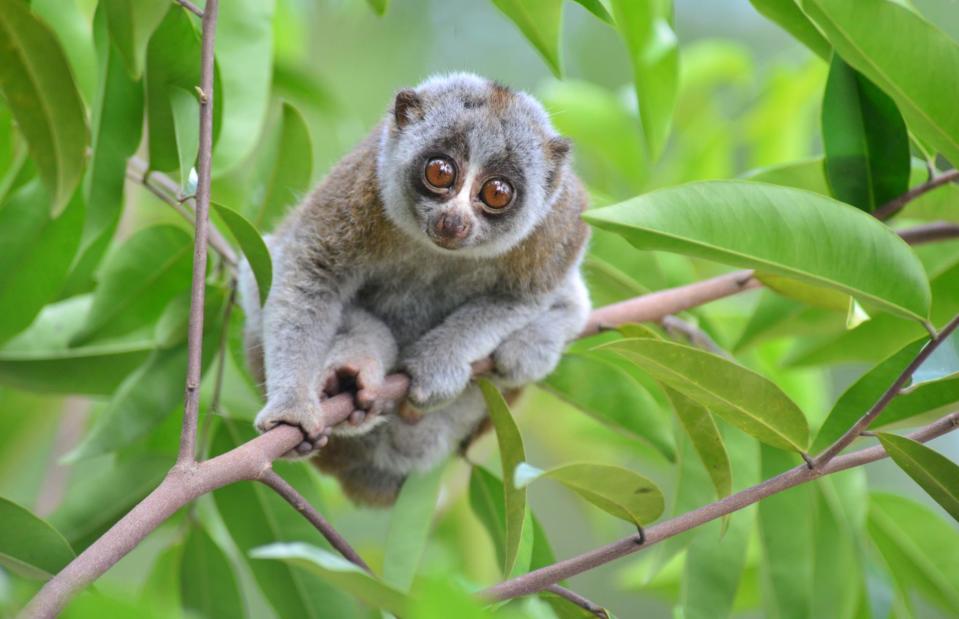
Conservationist/Shutterstock
Some animals are, rightly or wrongly, synonymous with being scary, like sharks, tigers and snakes. Then there are the cutest, cuddly looking creatures harbouring a deadly secret: come too close and it could be game over. These are the animals equipped with bone-crunching jaws, deadly venom or scarily sneaky tactics for trapping their prey.
From highly poisonous frogs to fluffy critters that can turn terrifying when disturbed or threatened, read on to discover some of the world’s deadliest and most dangerous animals...
Cape buffalo
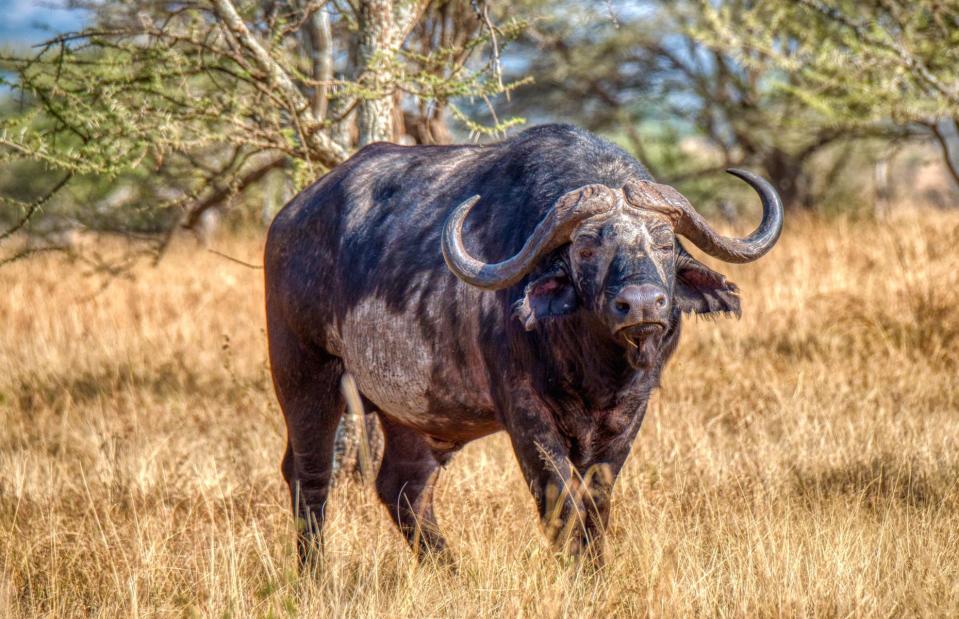
Gregory Rees/Shutterstock
Cape buffalo do look pretty intimidating, weighing up to 1,840 pounds (835kg) with huge horns curving either side of their heads. Yet they’re actually naturally peaceful, grass-grazing herbivores – unless disturbed. One of four species of African buffalo, they’re generally found in sub-Saharan Africa and are nicknamed 'Black Death' by hunters as they’re known to charge, unrelentingly, at speeds of up to 37 miles per hour (60 km/h), especially when protecting a calf. It’s been estimated that they kill as many as 200 people each year.
Golden poison dart frog
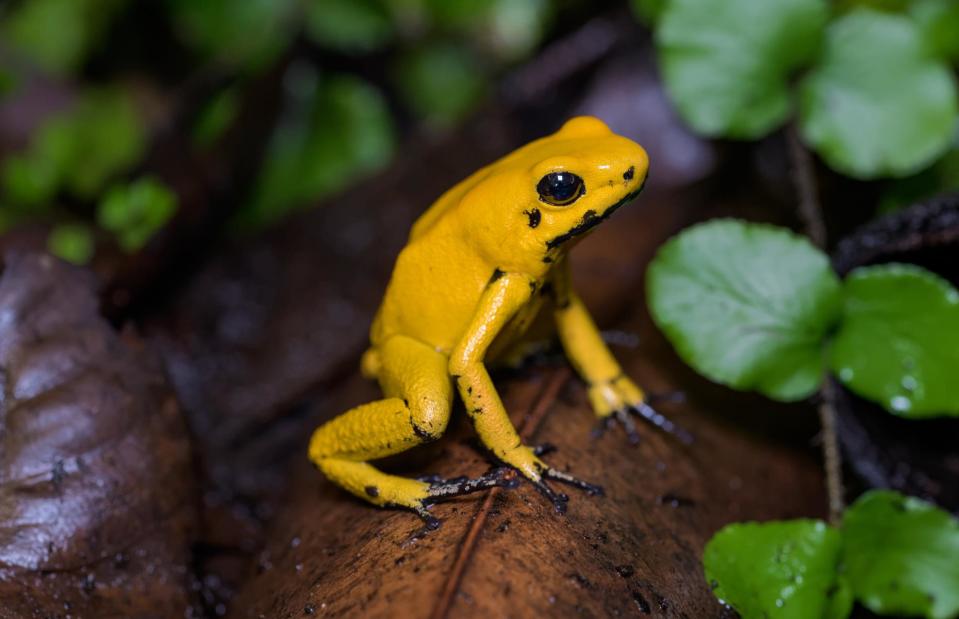
Thorsten Spoerlein/Shutterstock
This bright little jumper looks pretty unassuming but, in keeping with the general rule that vivid colours often signal danger, it's actually the deadliest of all amphibians. In fact, the golden poison dart frog is believed to be among the most poisonous animals alive. Found in the Colombian rainforest, they grow no bigger than around two inches (5cm) long yet hold enough poison to kill 10 people. The indigenous Emberá people have long used the venom to poison darts for hunting, giving the species its name.
Box jellyfish
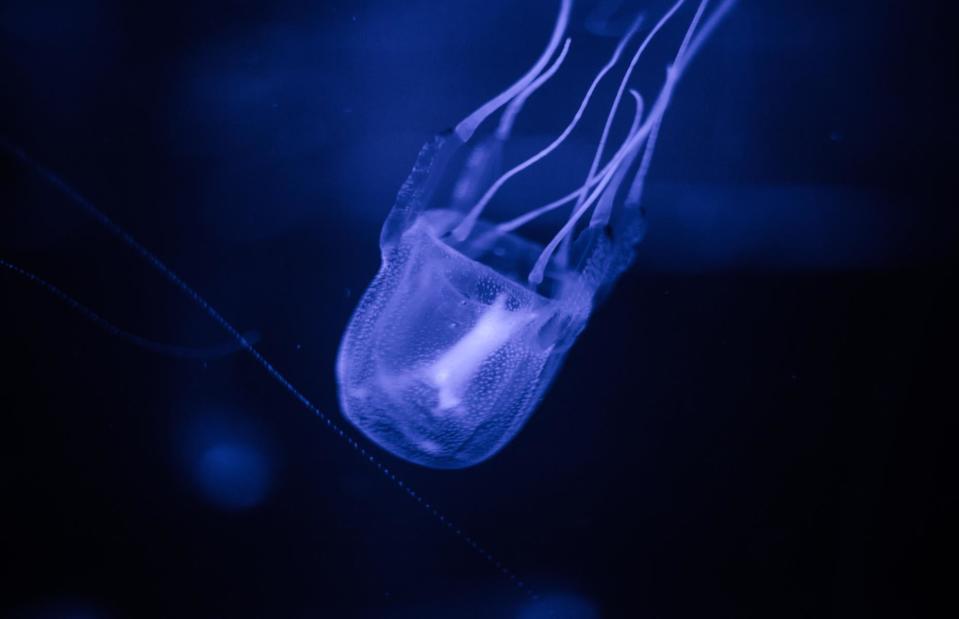
Dewald Kirsten/Shutterstock
Most of the 50-odd species of box jellyfish are relatively harmless but some of the shimmering, hypnotically beautiful creatures are effectively floating death traps, with each tentacle packing an arsenal of poisonous darts. The few lethal varieties are found mainly in the Indo-Pacific region and northern Australia – the Australian box jellyfish is the deadliest of all marine creatures. Those (including humans) unlucky enough to be struck can suffer paralysis, cardiac arrest and even death within minutes.
Hippopotamus
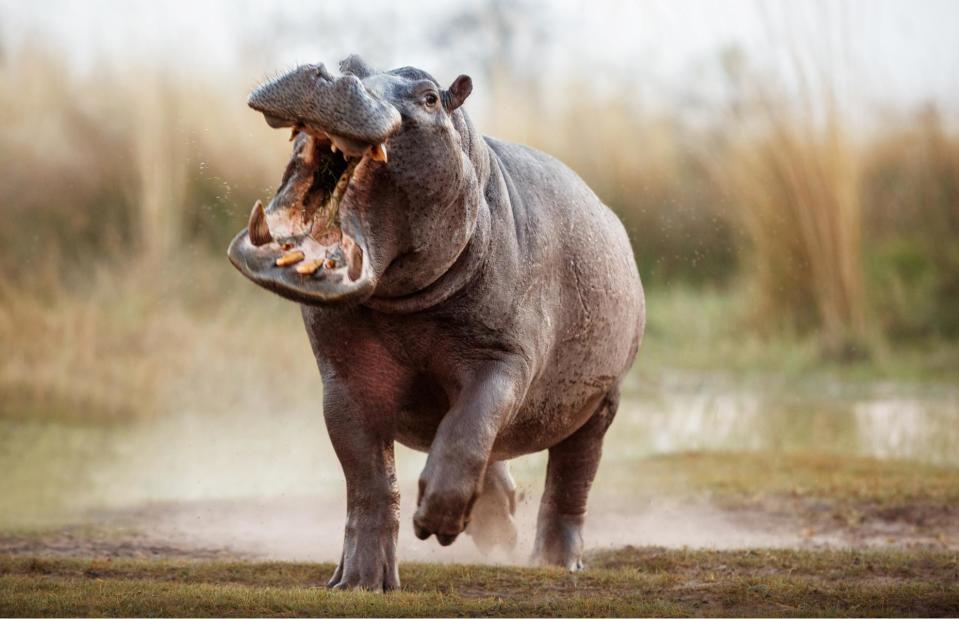
PhotocechCZ/Shutterstock
Hippos really are hungry, munching through around 80 pounds (36kg) of grass per day and reaching a hefty weight of up to 8,818 pounds (4,000kg). They are also, despite their cute and almost comical looks, among the most territorial animals on the planet. Although they spend most of the day wallowing in water in eastern-central and southern sub-Saharan Africa, they can match humans for speed on land and will give chase. It’s estimated that between 500 and 3,000 people are killed by hippos each year.
Moray eel
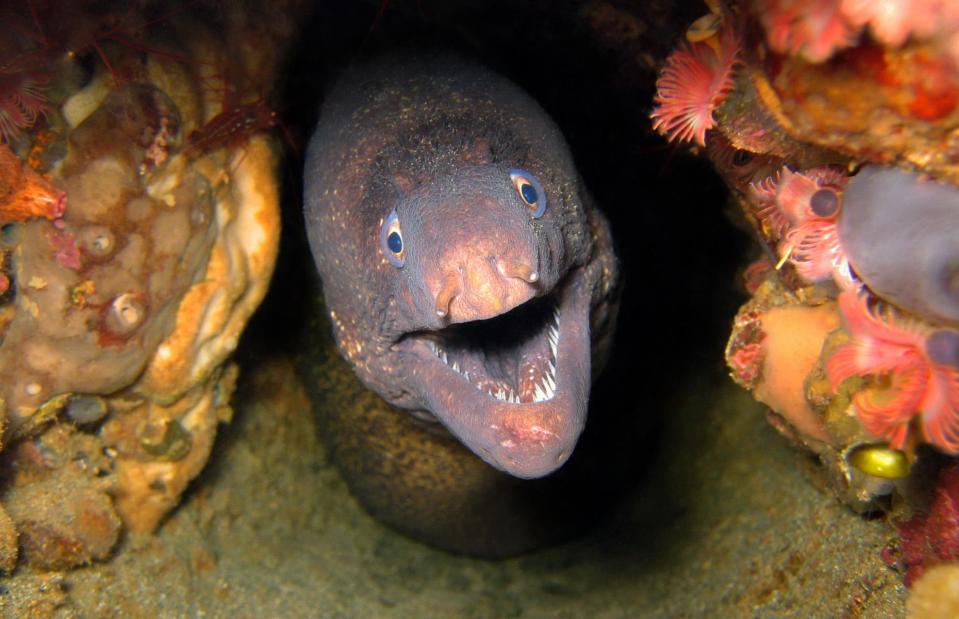
Damsea/Shutterstock
Moray eels are most likely to cause harm to humans once the creatures have been killed – they’re eaten in some parts of the world and their flesh can prove toxic and even deadly if not properly prepared. But they’re terrifying when alive too, with two sets of jaws and razor-sharp teeth that can inflict serious damage. Largely found lurking in reefs in tropical and subtropical seas, they trap prey (usually fish) in their primary jaws and ensnare it with the second set of teeth, pulling it into the throat.
Saw-scaled viper
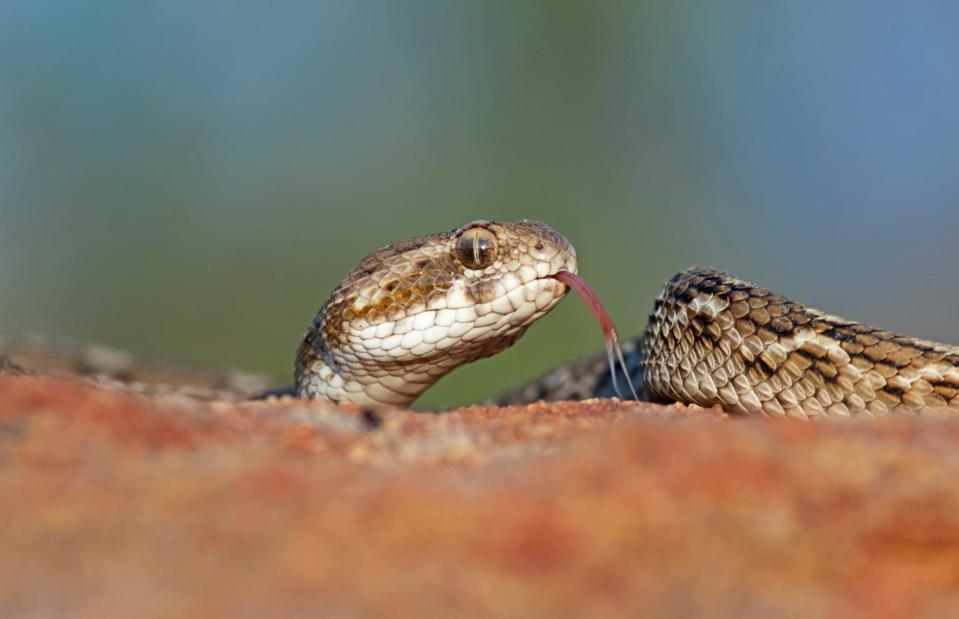
Abhishek Jadwani/Shutterstock
The saw-scaled viper isn’t the most venomous of snakes – that accolade goes to the Inland or Western taipan, native to central Australia – but it is among the most aggressive and is the deadliest to humans. Found in India, Pakistan, Sri Lanka, and parts of Africa and the Middle East, it often lives near inhabited areas and strikes frequently, with terrifying speed. It’s estimated that a staggering 5,000 people are killed by them each year – the highest death toll of any snake.
Pufferfish
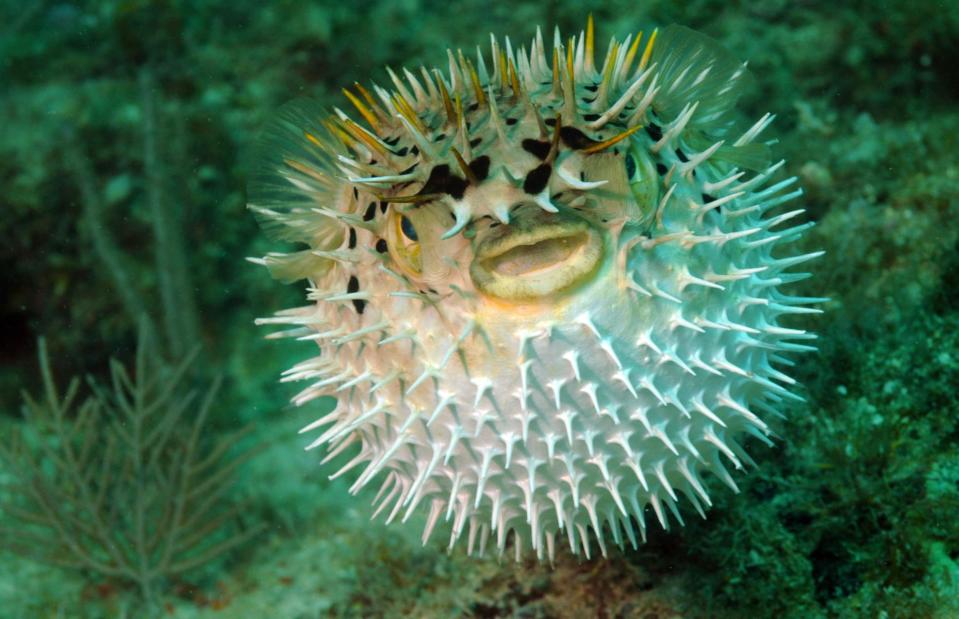
FtLaud/Shutterstock
Also known as blowfish, pufferfish are found in tropical seas worldwide and are classed as the second most poisonous vertebrate after the golden poison dart frog. When threatened by a predator, they inflate by rapidly ingesting huge amounts of water or air – believed to have developed to compensate for their slow swimming speed. If caught, most pufferfish will release enough tetrodotoxin – a deadly venom up to 1,2000 times more poisonous than cyanide – to kill 30 people, with no known antidote. However, most human deaths occur when it’s eaten, as the flesh is toxic if not properly prepared.
Deathstalker scorpion
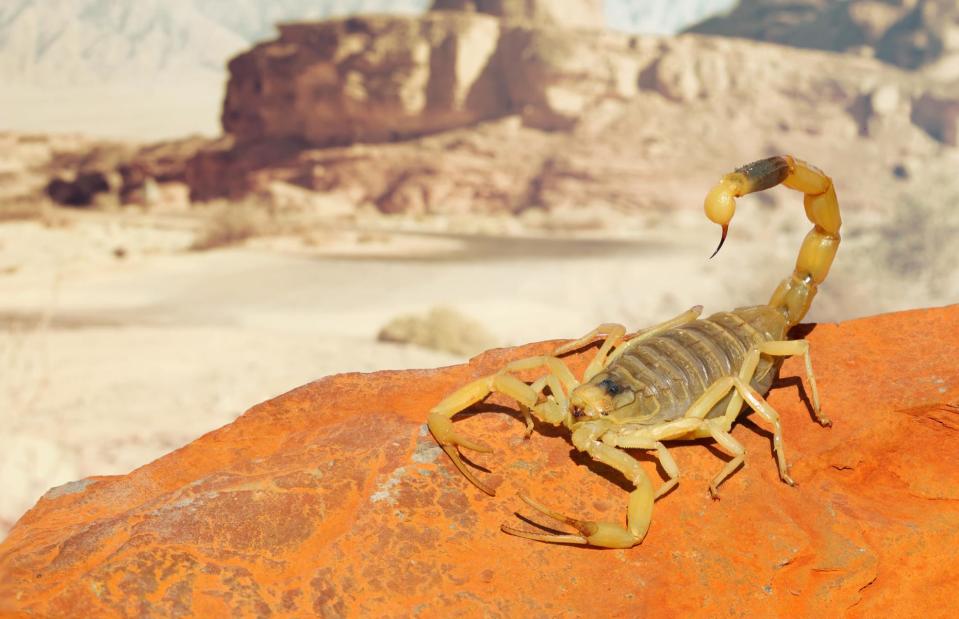
Protasov AN/Shutterstock
This arachnid is as terrifying as its name and looks suggest. Up to 40 scorpion species are capable of killing humans and the deathstalker, found in deserts in North Africa and the Middle East, is the deadliest of them all. The creatures, which have eight legs and two bodies like spiders, prey on small invertebrates which they paralyse with small bursts of venom from their sting.
Black mamba
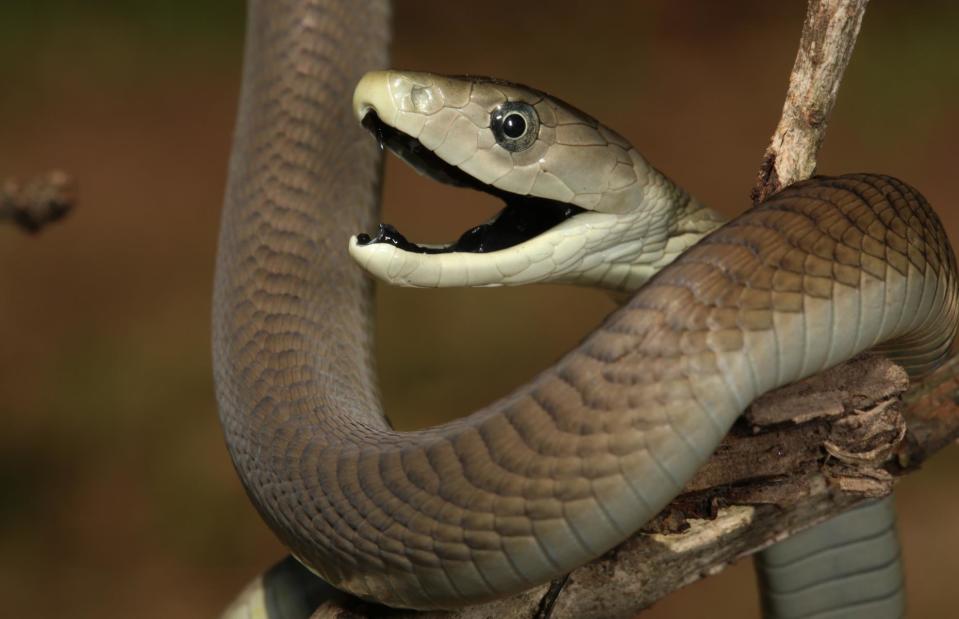
NickEvansKZN/Shutterstock
Learning about the black mamba is unlikely to quell any existing fear of snakes. The reptile, found in the savannahs and hills in eastern and southern Africa, is the longest venomous snake on the continent and can reach up to 14 feet (4.3m) in length. More terrifyingly, black mambas are among the world’s fastest snakes and can move at speeds of up to 12.5 miles per hour (20km/h). Named for their dark, gaping mouths, they’re naturally reserved but will strike when threatened – and bites are usually fatal within 20 minutes.
King cobra
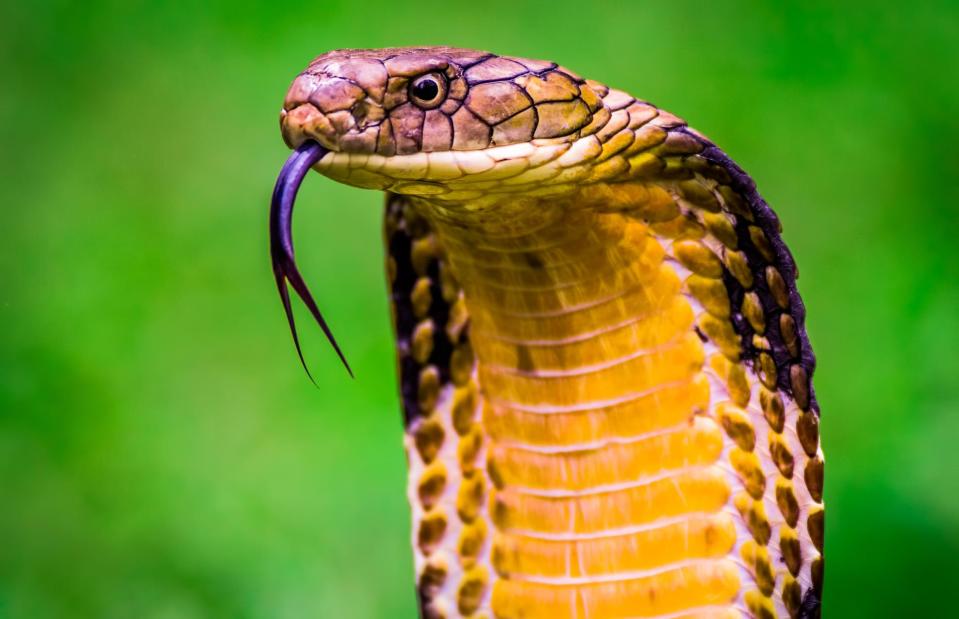
CappaPhoto/Shutterstock
The world’s longest venomous snake at 18 feet (5.5m) and the star of many a terrifying nightmare, the king cobra is something of a poster-reptile for deadliness. It is indeed one of the most venomous of snakes and also has some particularly scary traits, such as its ability to raise itself up so its beady eyes are level with a human’s. Found mostly in India’s rainforests and plains, they’re also equipped with an intimidating flaring 'hood' and a particularly loud hiss. A spit of its venom is enough to kill an elephant or 20 people.
Elephant
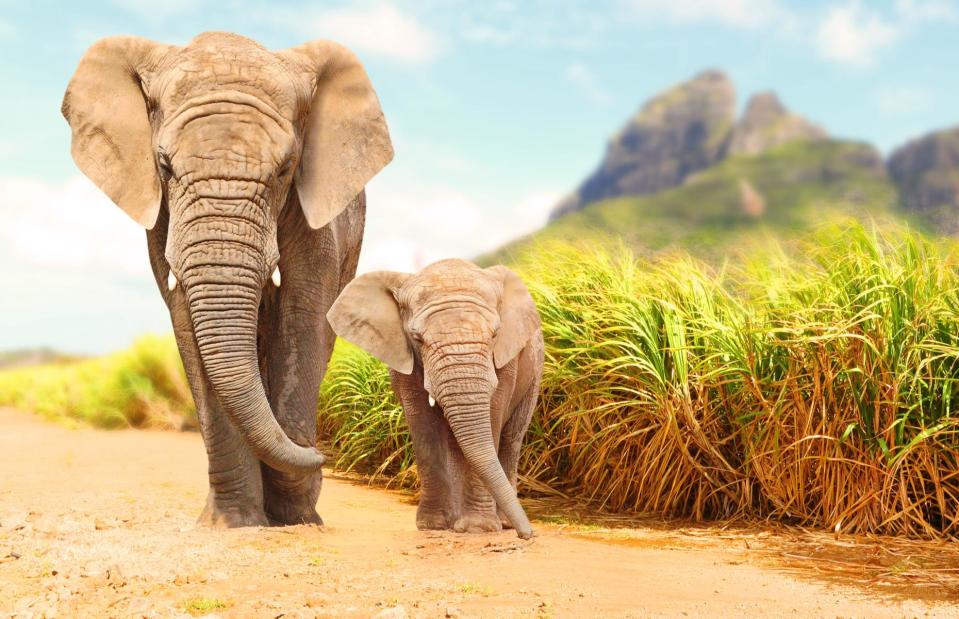
Kletr/Shutterstock
Elephants are seen as gentle giants and, when left alone and observed from a respectful distance, they are. But they certainly aren’t pushovers and will respond if they – or their calves – are threatened. Habitat encroachment and conflicts with farmers are also issues, with the WWF reporting that more than 100 people are killed by elephants each year in India. As the largest land mammals – with African elephants the biggest species, weighing up to 15,432 pounds (7,000kg) – the danger comes from their sheer heft.
Blue-ringed octopus
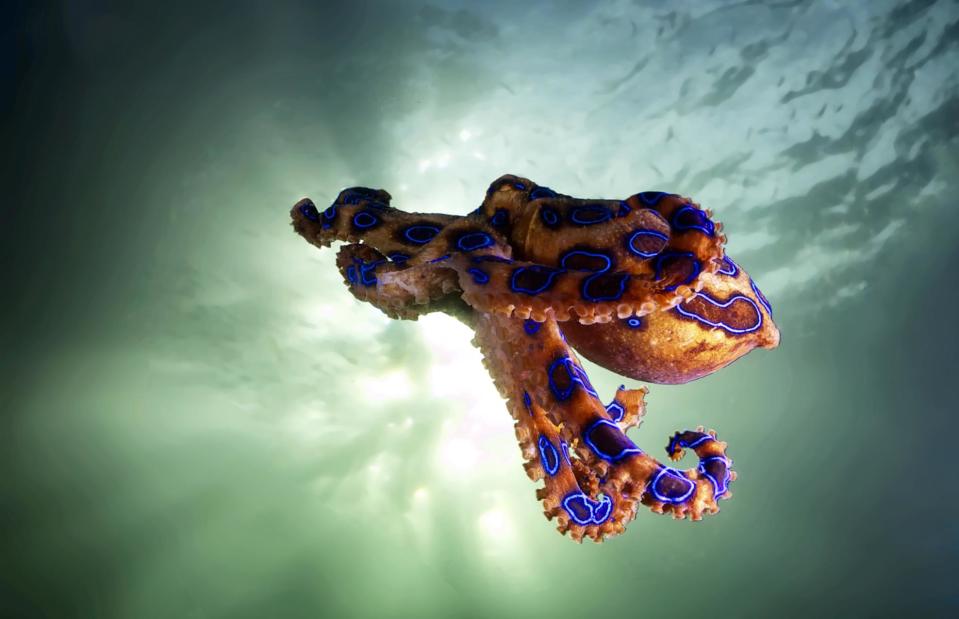
YUSRAN ABDUL RAHMAN/Shutterstock
Many octopuses squirt ink to deter potential threats but this cute-looking marine creature, which is roughly the size of a pencil, emits something a little less edible: poison. Enough of it to kill around 26 people within a matter of minutes, in fact. Named because of the blue rings that brighten and intensify across its body when threatened, this diminutive octopus is native to the Pacific Ocean and lurks in crevices in reefs and tide pools. Deaths are rare, with none reported since the 1960s, although this is definitely a case of look but don’t touch.
Funnel-web spider
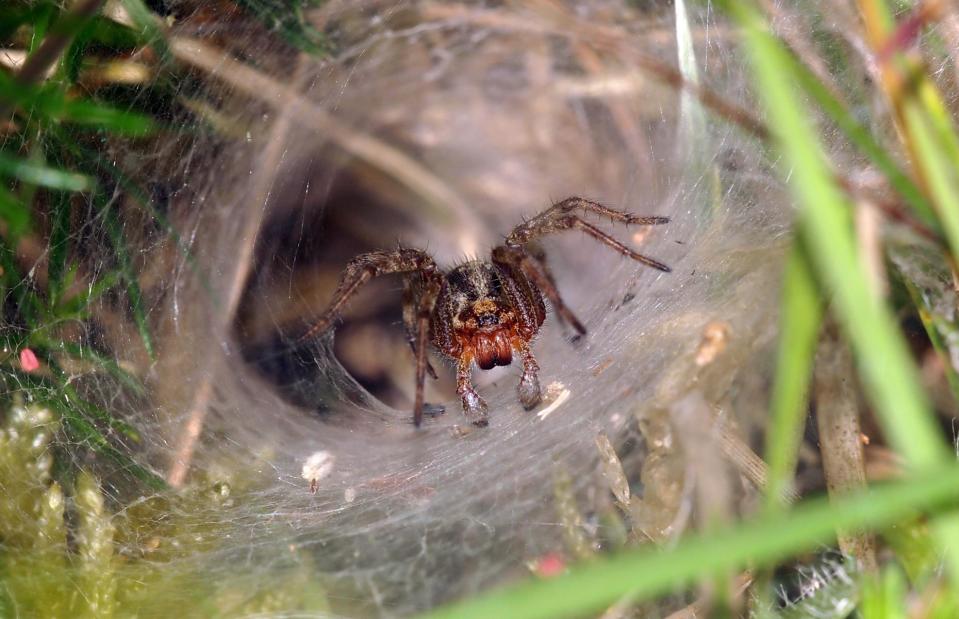
Edwin Butter/Shutterstock
The male funnel-web is the world’s most venomous spider with a bite capable of killing an adult human within half an hour. They can be found (by the unlucky) in eastern and southern Australia and Tasmania, usually lurking in corners and sometimes even shoes, with a tendency to build their webs in sheltered burrows to create the funnel shape that gives them their name. Up to 40 people are bitten each year but there have only been 13 recorded deaths, and none since an anti-venom was released in 1981.
Stonefish
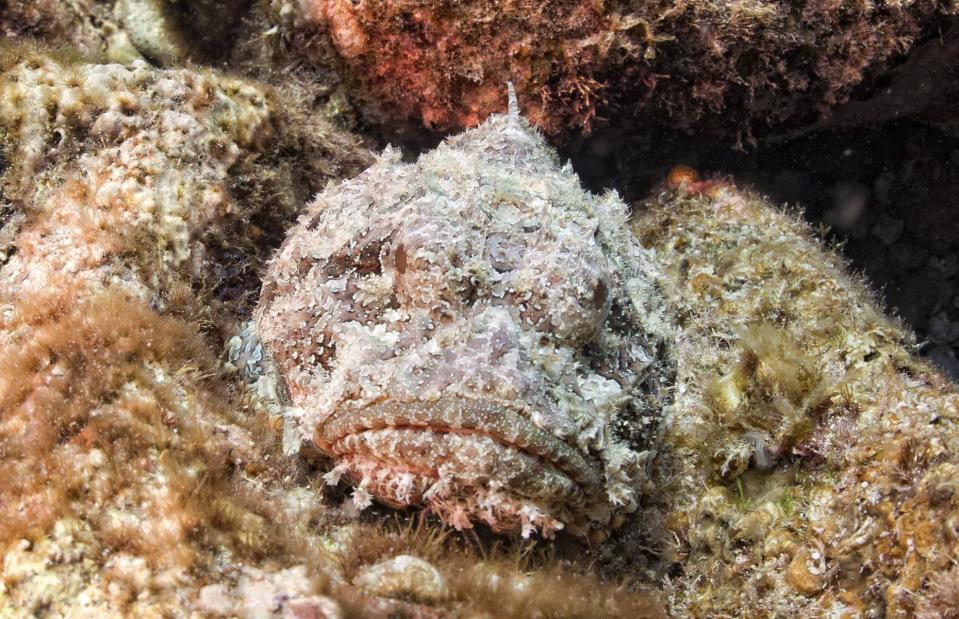
Andrea Izzotti/Shutterstock
The world’s most venomous fish (that we know of) is also, terrifyingly, an expert at camouflage. Found in oceans from the Red Sea to Australia’s Great Barrier Reef, they lurk on the seabed and blend in almost completely with the reefs and rocks. From those hidden depths they ambush their prey and, while they don’t hunt out humans, their venom can prove deadly to those unlucky enough to step on one. The poison, injected from the dorsal fin spines, can kill within an hour if the anti-venom isn’t administered.
Lion
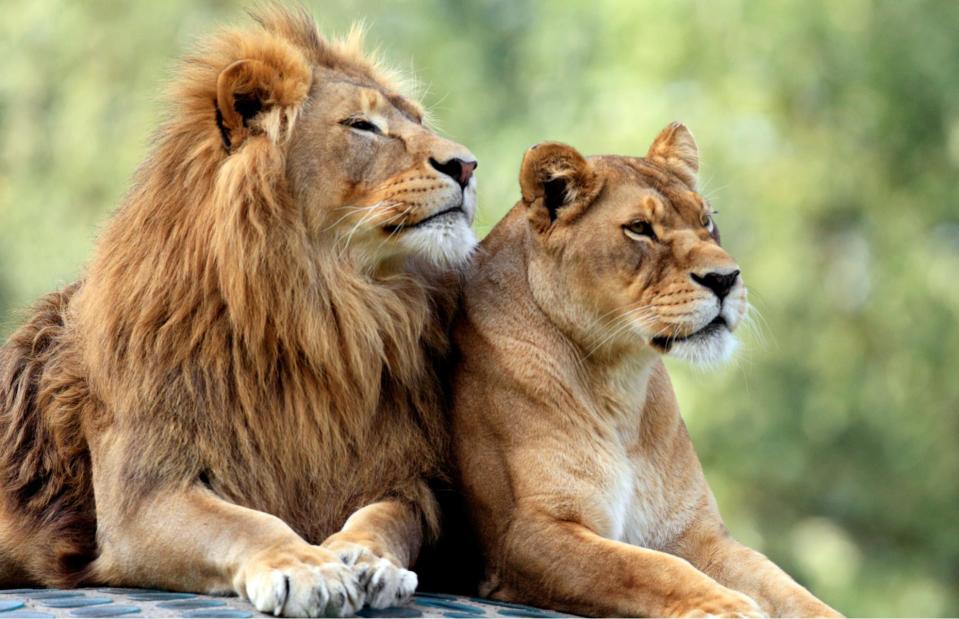
ArtMediaFactory/Shutterstock
Lions sleep for up to 20 hours a day – all the better to conserve their energy for hunting or warding off potential challengers. Almost all wild lions live in sub-Saharan Africa, with a small population in western India. Although people aren’t their natural prey, it’s estimated lions are responsible for around 250 human deaths each year, although it varies wildly. Most attacks are believed to be by sick male lions looking for an easy meal – they can easily outrun us, reaching up to 50 miles per hour (80km/h).
Nile crocodile

diegooscar01/Shutterstock
Crocodiles kill around 1,000 people per year and Nile crocodiles – found mostly in Egypt – are the deadliest, with an estimated 200 people falling victim to their prehistoric-looking jaws each year. But they don’t set out to hunt humans – it’s simply that to a croc lurking in the river, pretty much any flesh is fair game, from fish to zebra. And few stand a chance. The reptiles weigh up to 1,650 pounds (748kg) and are capable of biting with a force of 3,700 pounds (1,678kg) per square inch, rivalling the jaws of a T-rex.
American alligator
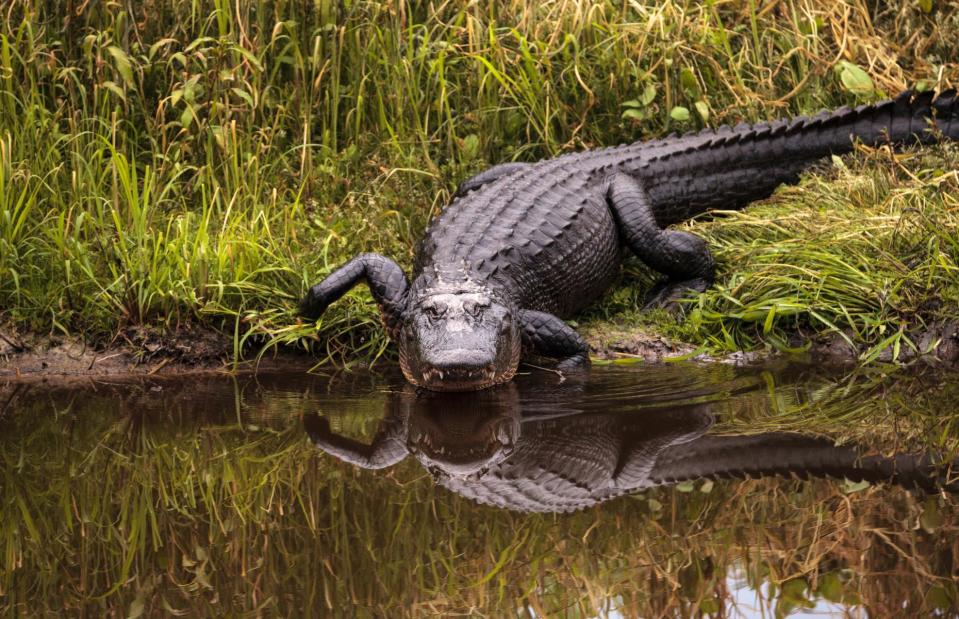
SunflowerMomma/Shutterstock
Alligator attacks on humans are relatively rare, with Florida statistics showing there were 453 unprovoked bites, 26 of those resulting in death, between 1948 and 2022. Found mostly in Florida and other US states including Louisiana and Mississippi, they tend to be less aggressive – and choosier about what they eat – than crocs. Nevertheless, their strong jaws can cause serious damage to humans, especially as our habitat encroaches more on theirs.
Great white shark
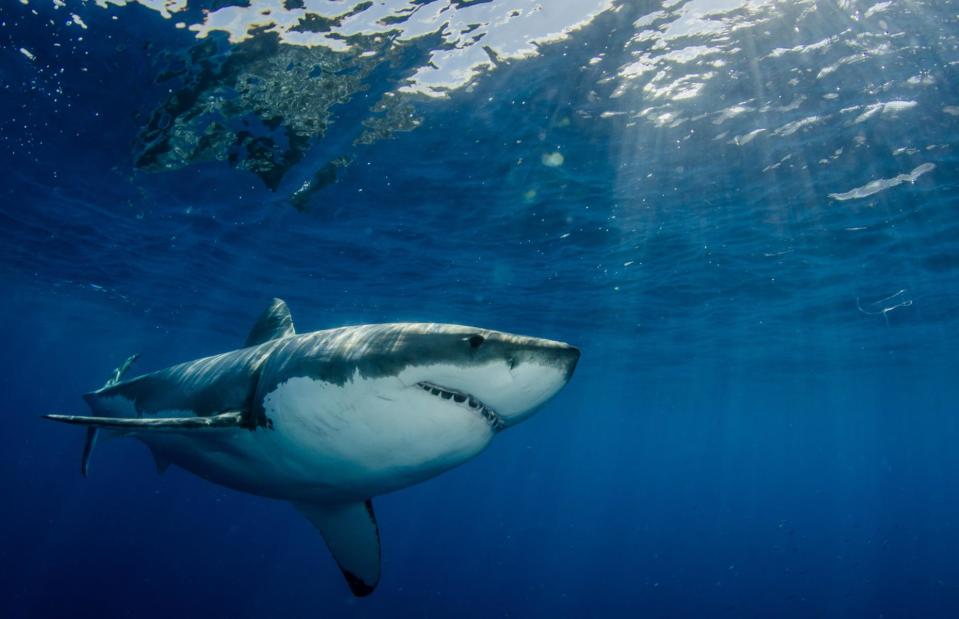
Byron K. Dilkes/Shutterstock
It’s not surprising that great white sharks are almost universally feared. They’re the world’s largest predatory fish, growing up to 20 feet (6m) long and weighing around 5,000 pounds (2,267kg). They can also slice through the water, torpedo-like, at up to 15 miles per hour (24km/h). Oh, and they have up to 30 razor-sharp teeth that they use to tear up their prey. But they aren’t quite as murderous as Jaws might suggest: five people died from shark bites in 2022, with an annual average of six.
Cone snail
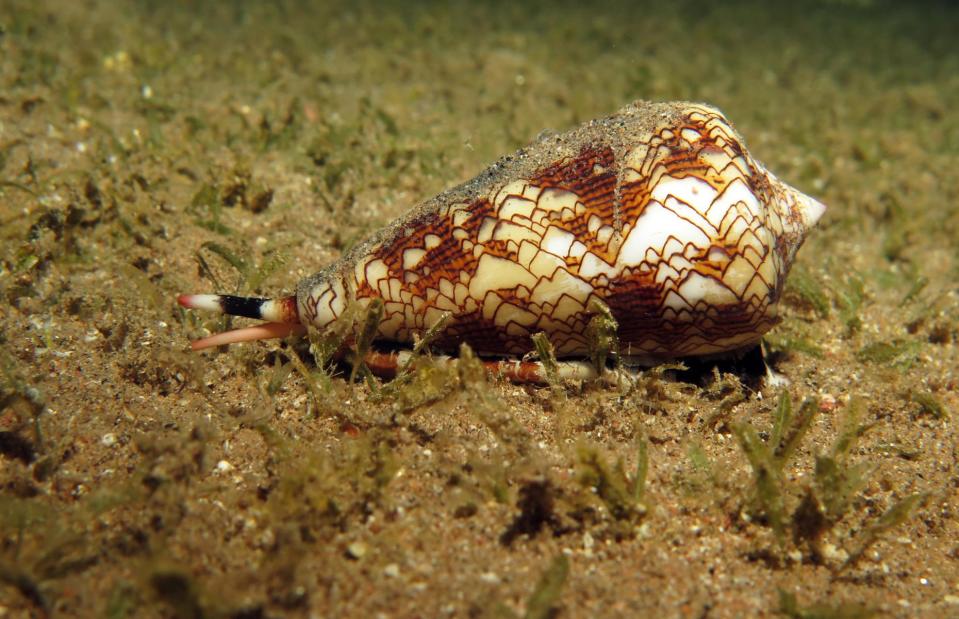
Laura Dts/Shutterstock
These pretty, marble-shelled molluscs are equipped with a needle-like tooth that injects prey with venom. Cone snails launch this to latch onto a target, paralysing their victim. Some use this brutal technique to feed on worms while others feed on fish, and it’s the latter – particularly the geography cone snail – that’s potent enough to kill humans. Found around the Caribbean, Hawaii, Florida and Indonesia, they’re also known as cigarette snails because the poison acts so quickly there’s just enough time to light up before you die.
Tiger
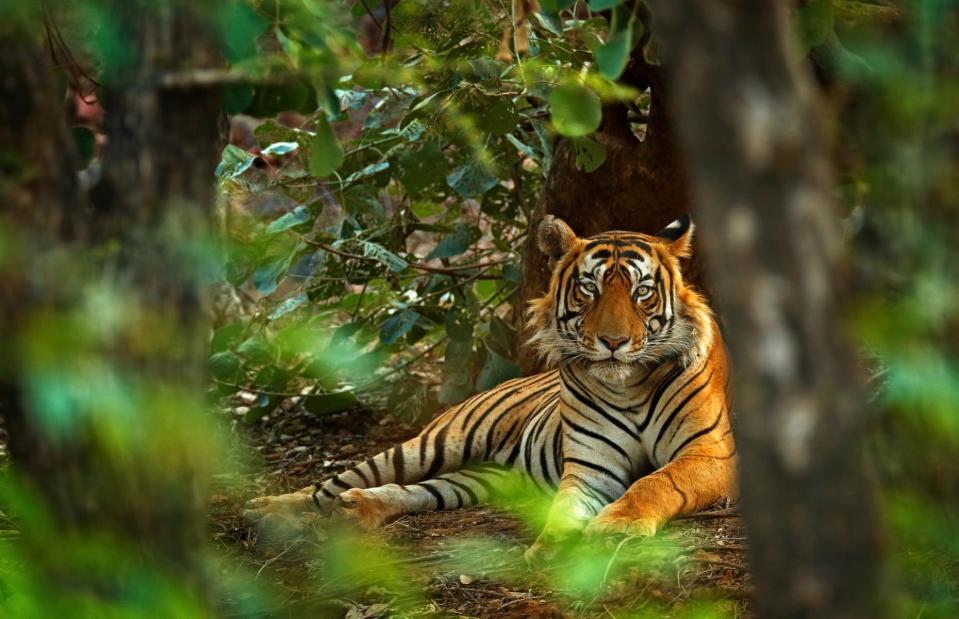
Ondrej Prosicky/Shutterstock
These beautiful, incredibly strong big cats have been somewhat vilified in popular culture but they’re actually less deadly to humans than, say, elephants or hippos. The vast majority of the 4.500 tigers left in the wild, most in India, avoid humans completely. But attacks do happen, particularly in areas where humans live near tigers’ habitat. It’s estimated that between 50 to 250 people are killed by tigers each year.
Honey badger
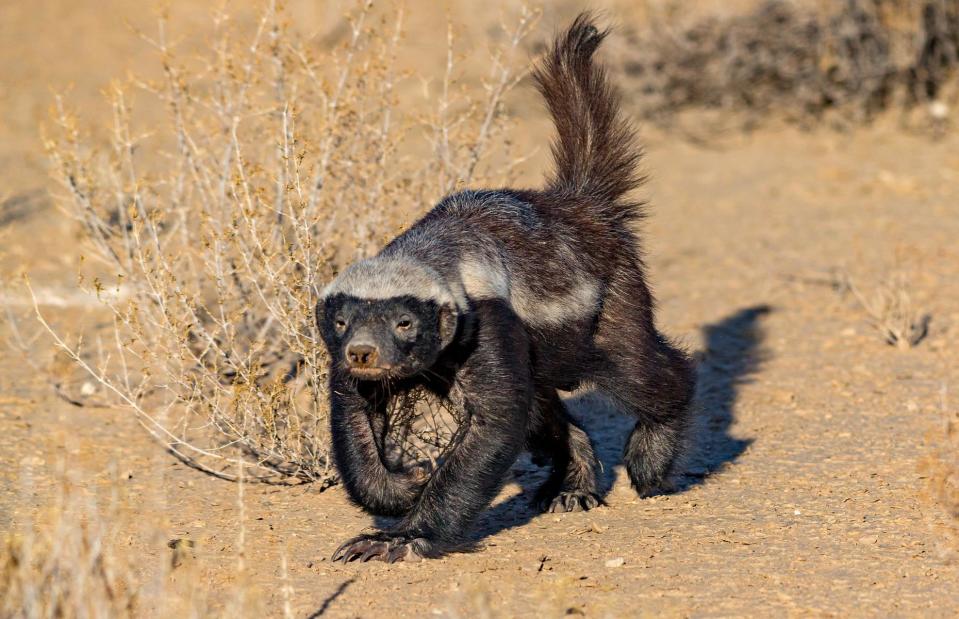
Braam Collins/Shutterstock
Honey badgers have developed a pretty fearsome reputation as one of the toughest animals and it’s largely deserved. Also known as ratels and found in sub-Saharan Africa, Saudi Arabia, Iran and western Asia, honey badgers love to feed on honey and bee larvae but they’re certainly not afraid to have a go at much bigger animals. Razor-sharp teeth and claws, paired with a muscular build and big, bad attitude make these creatures a safe bet in most fights.
Fire ant
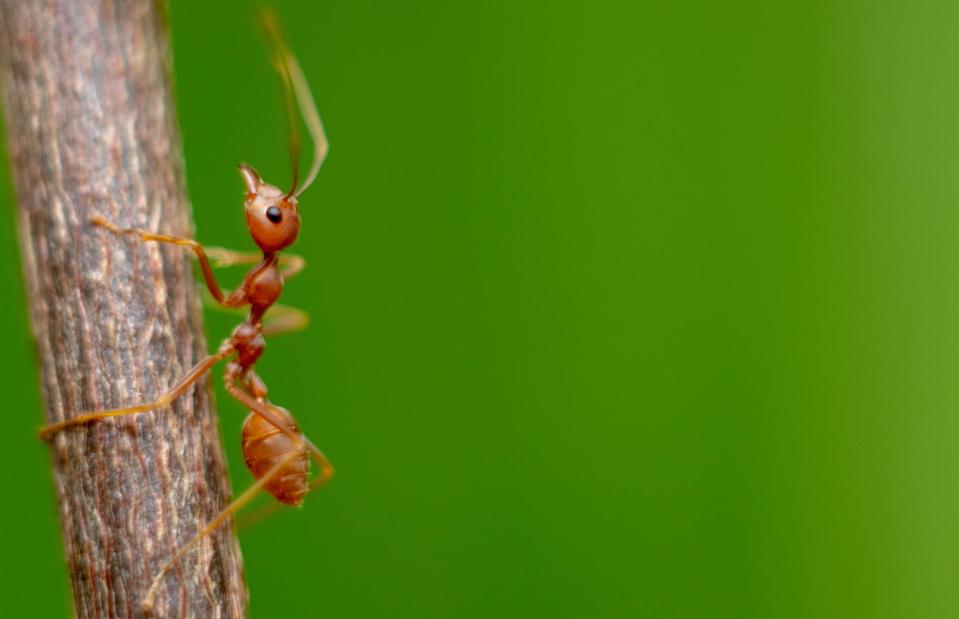
5x/Shutterstock
Among all ant types, fire ants – accidentally introduced from South America – are the deadliest. The brownish-red ants are particularly fearsome because they tend to be so aggressive, more likely to persistently attack people than other ant species. Their bites are severe, causing itchy, painful red welts and, in severe cases, potentially fatal anaphylactic shock.
Asian giant hornet
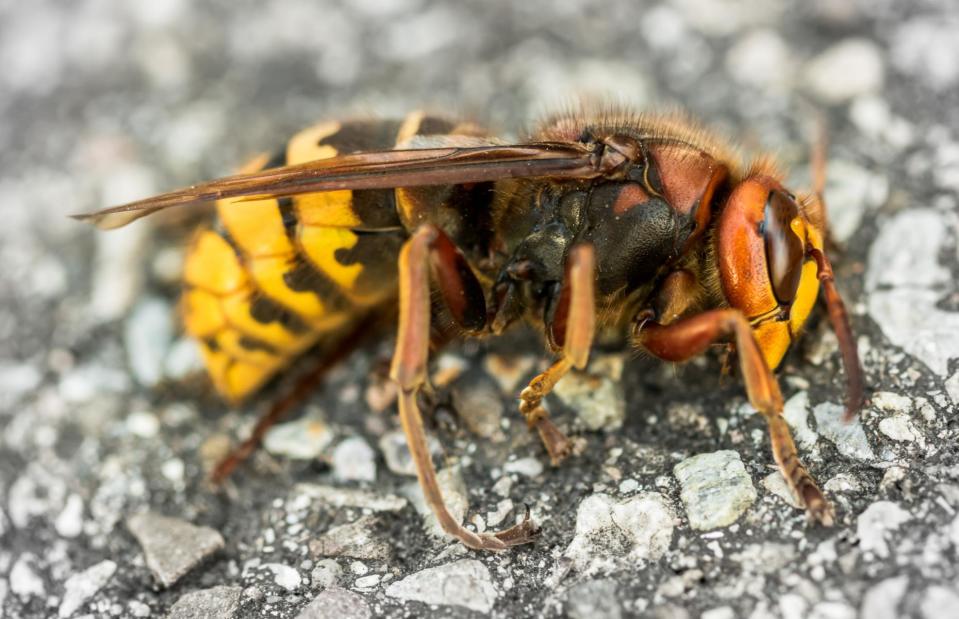
tzuky333/Shutterstock
Hornets are basically enormous wasps, at least in looks, which makes them terrifying enough. Most species avoid people and aren’t aggressive, but that isn’t the case with the Asian giant hornet. Roughly as big as the average human thumb, they’re fiercely protective of their colonies and, if threatened, will inflict a sting that’s been compared to a red-hot needle with pain lasting days. One hornet has enough venom to kill 10 mice, while multiple stings can kill humans regardless of allergies. In Japan, between 30 and 50 deaths are attributed to the insects each year.
Komodo dragon
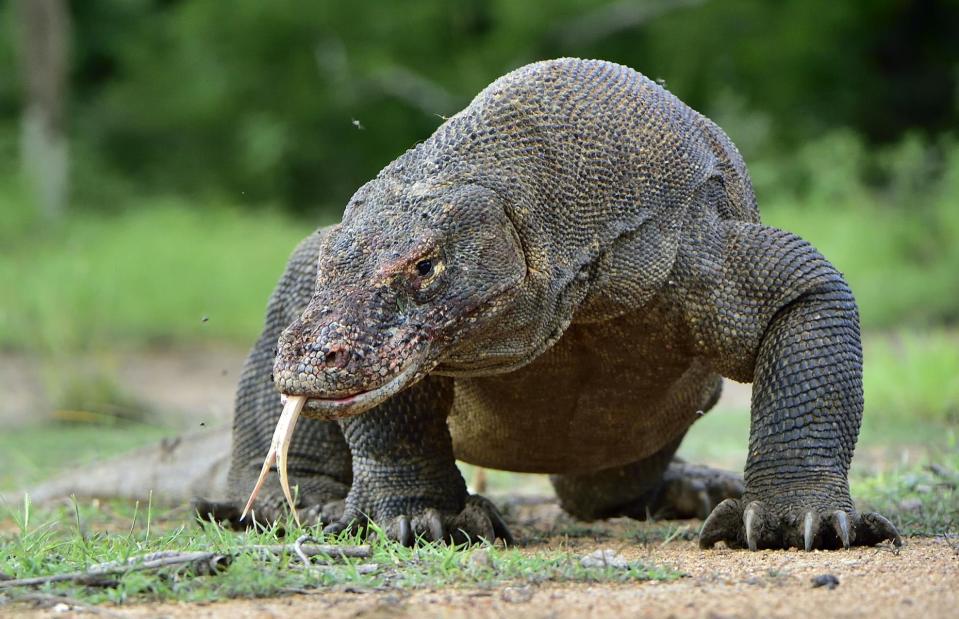
Sergey Uryadnikov/Shutterstock
Komodo dragons, endemic to Indonesia’s Lesser Sunda Islands, grow up to 10 feet (3m) long and weigh around 330 pounds (150kg) – and they’re fearsome predators. After ambushing their prey, they inflict a razor-sharp bite that releases a potent venom, causing shock and preventing clotting so victims bleed to death. They will also stalk bite victims relentlessly, waiting for the poison to kick in. Five people have been killed by the reptiles since 1974, according to Komodo National Park.
Dingo
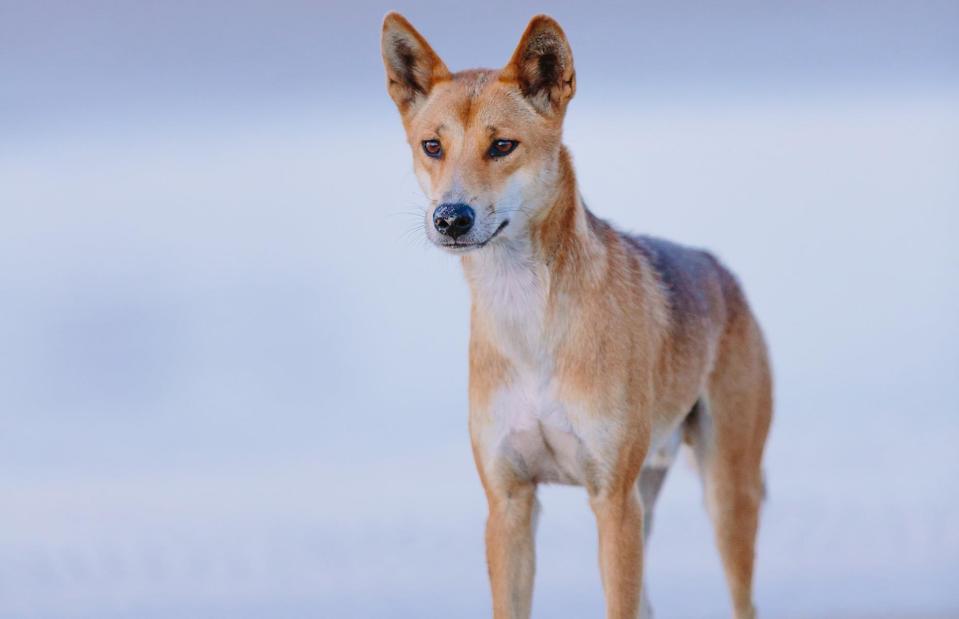
Pawel Papis/Shutterstock
They may be cute, but don’t be deceived by appearances. Dingoes descended from domestic dogs introduced to Australia by Asian seafarers about 4,000 years ago but now they are the apex predator. They hunt for mammals as big as red kangaroos and have a taste for livestock, putting them in direct conflict with farmers. Dingo attacks on humans are rare but have become more common on K'gari (Fraser Island) in Queensland where everyday interaction has seen them lose their fear of people.
Africanized bee
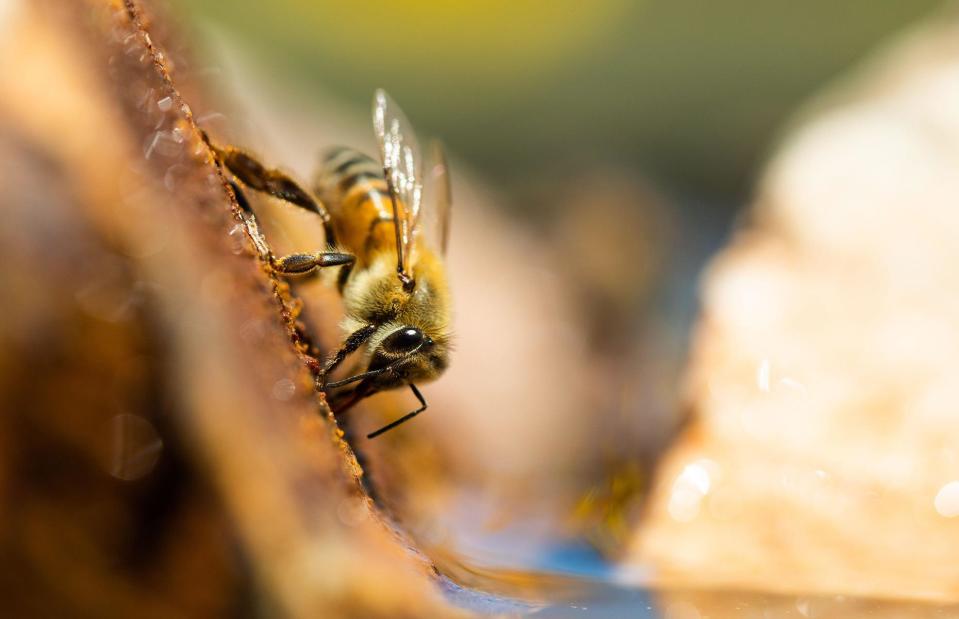
Wirestock, Inc./Alamy Stock Photo
Africanized bees, known colloquially as ‘killer bees’, are a hybrid species created in Brazil in 1956 by cross-breeding East African lowland honeybees with European honeybees in an effort to increase honey production. About 20 swarms escaped quarantine in 1957 and by the 1980s colonies had reached North America. Africanized bees are much more aggressive than their European counterparts, often emptying their hives to defend it when under threat. Their ferocious attacks have killed more than 1,000 people including six people in Nicaragua when their bus crashed into a hive.
Slow loris
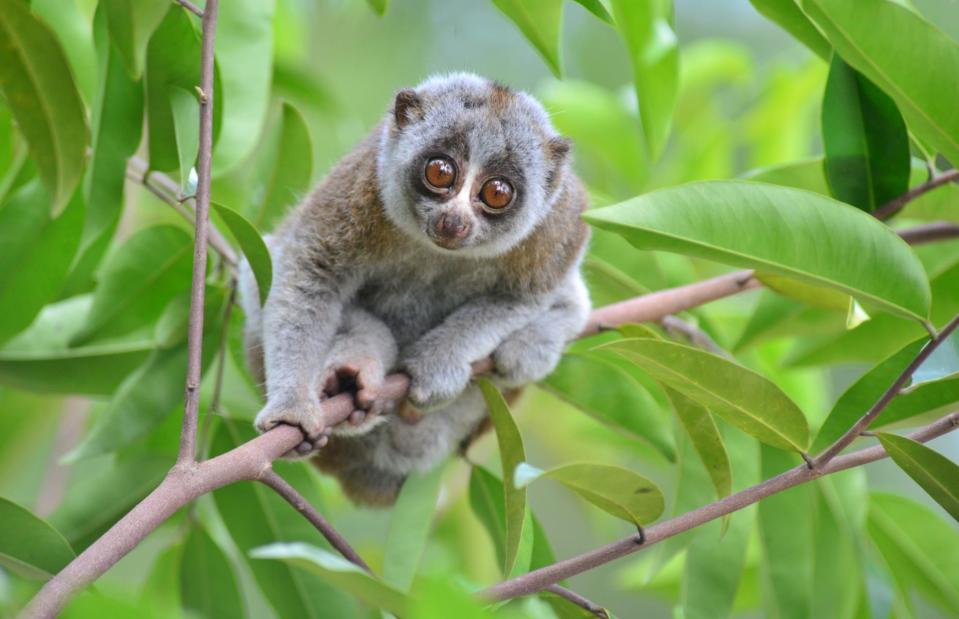
Conservationist/Shutterstock
Slow lorises may be among the cutest-looking creatures but they can actually be deadly. The rare mammals, who have the colouring and twisting movement of a cobra, live in the rainforests of South and Southeast Asia and are the only venomous primates. When threatened, they lick toxic-secreting glands, mixing venom with saliva for a bite that can cause anaphylactic shock and even death in humans. Slow lorises are currently endangered due to habitat loss and illegal medicine and pet trades, with hunters often clipping the teeth.
Grizzly bear
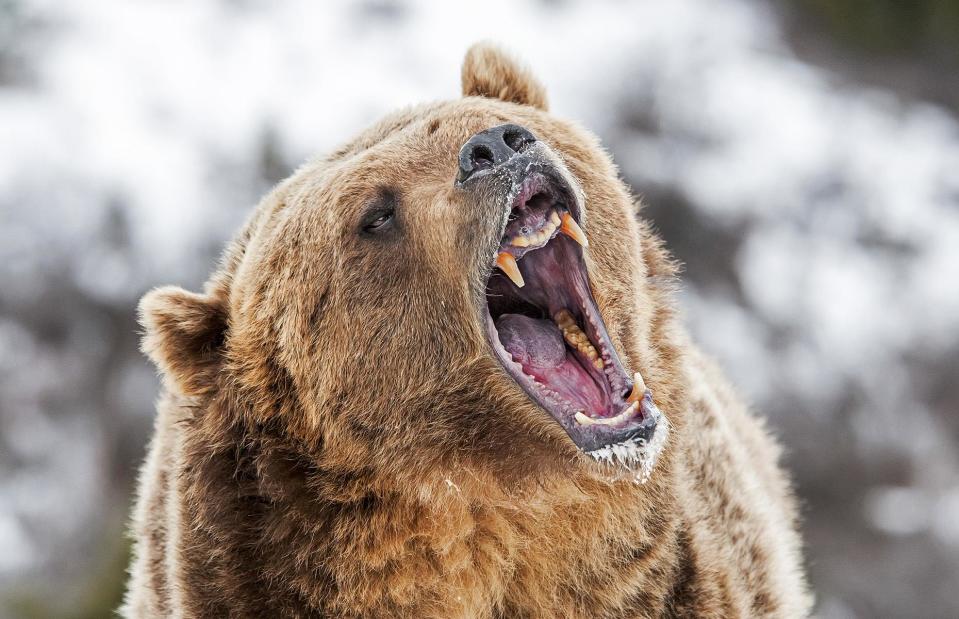
Scott E Read/Shutterstock
From their sheer mass – adult grizzlies can weigh upwards of 700lbs (315kg) – to their giant teeth and sharp claws, these monstrous bears look mighty intimidating. Thankfully, though, bear attacks are very rare, mostly because the animals are uninterested in humans – but sadly there are still typically one or two deaths each year. The US National Park Service urges people to be aware of bear safety while hiking, including keeping a distance and carrying bear spray.
Polar bear
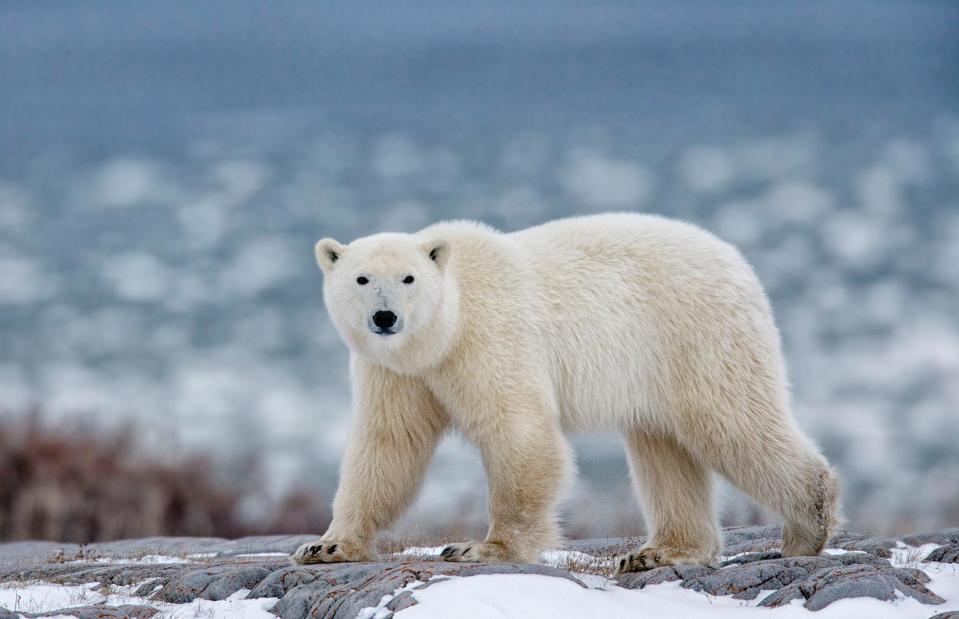
isabel kendzior/Shutterstock
Despite their formidable reputation, like grizzlies, polar bears are also involved in fairly few human attacks – though the danger they pose should not be underestimated. According to the organisation Polar Bear International, there are typically one to three attacks per year worldwide. Meanwhile, the United States Geological Survey (USGS) says the polar bears most likely to attack are "nutritionally stressed adult males", while an adult female may strike out to defend her cubs.
Tsetse fly

Jaco Visser/Shutterstock
At first glance, this little insect looks very innocuous indeed – but, in fact, the bite of a Tsetse fly can be deadly. The flies, which are found across sub-Saharan Africa, can cause a disease named African trypanosomiasis, or sleeping sickness, which can come with nasty symptoms like muscle aches, fever and fatigue, and can be fatal if not treated. It's thought that the disease kills upwards of 50,000 people each year.
Mosquito
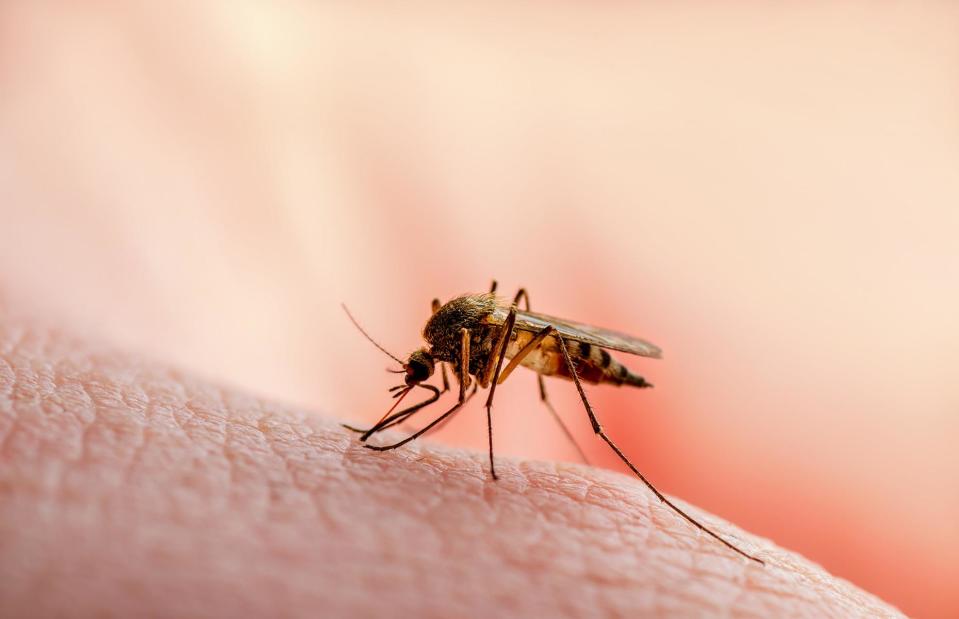
nechaevkon/Shutterstock
Another insect with a potentially fatal bite, mosquitos are transmitters of malaria. Only the genus 'Anopheles' is able to pass on the disease, and bites typically come from females. Malaria symptoms can include vomiting, fever and muscle aches, and both the CDC and NHS recommends that travellers take antimalarial drugs if they're visiting a region with the disease. It's estimated that there are more than 240 million cases of the disease each year. In 2021, malaria led to 619,000 deaths globally.
Kangaroo
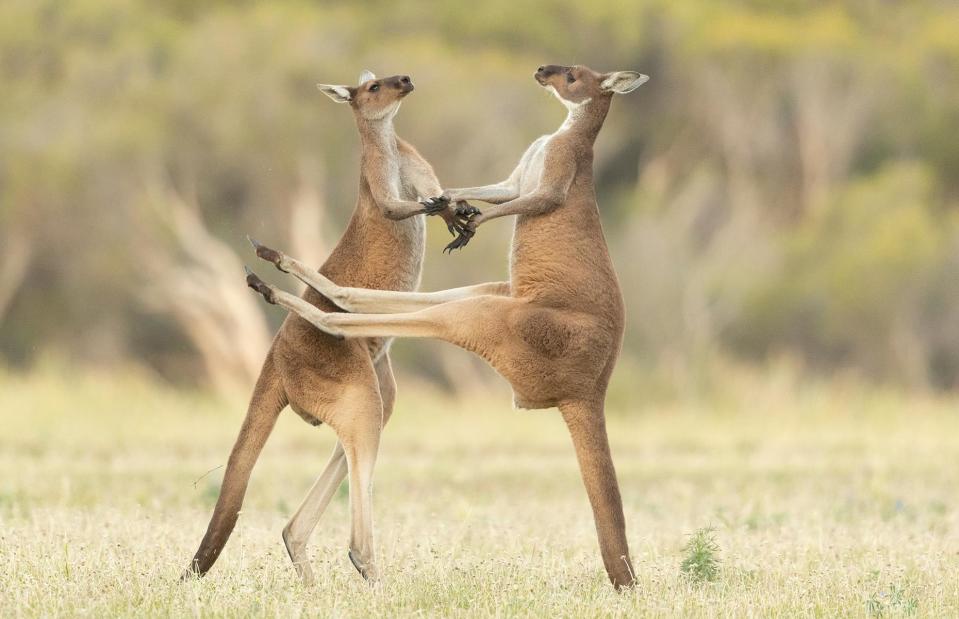
Lea Scaddan/Shutterstock
Kangaroo attacks are exceedingly unusual – but they can be deadly. Last autumn, an incident made the news as an Australian man was killed in a rare kangaroo attack. According to reports, it was unclear whether the marsupial was being kept as a pet by the man in question, and the event apparently represented the first fatal attack by a kangaroo Down Under since way back in 1936. Still, whatever the statistics, it's always best to keep a safe distance from any wild animal.


